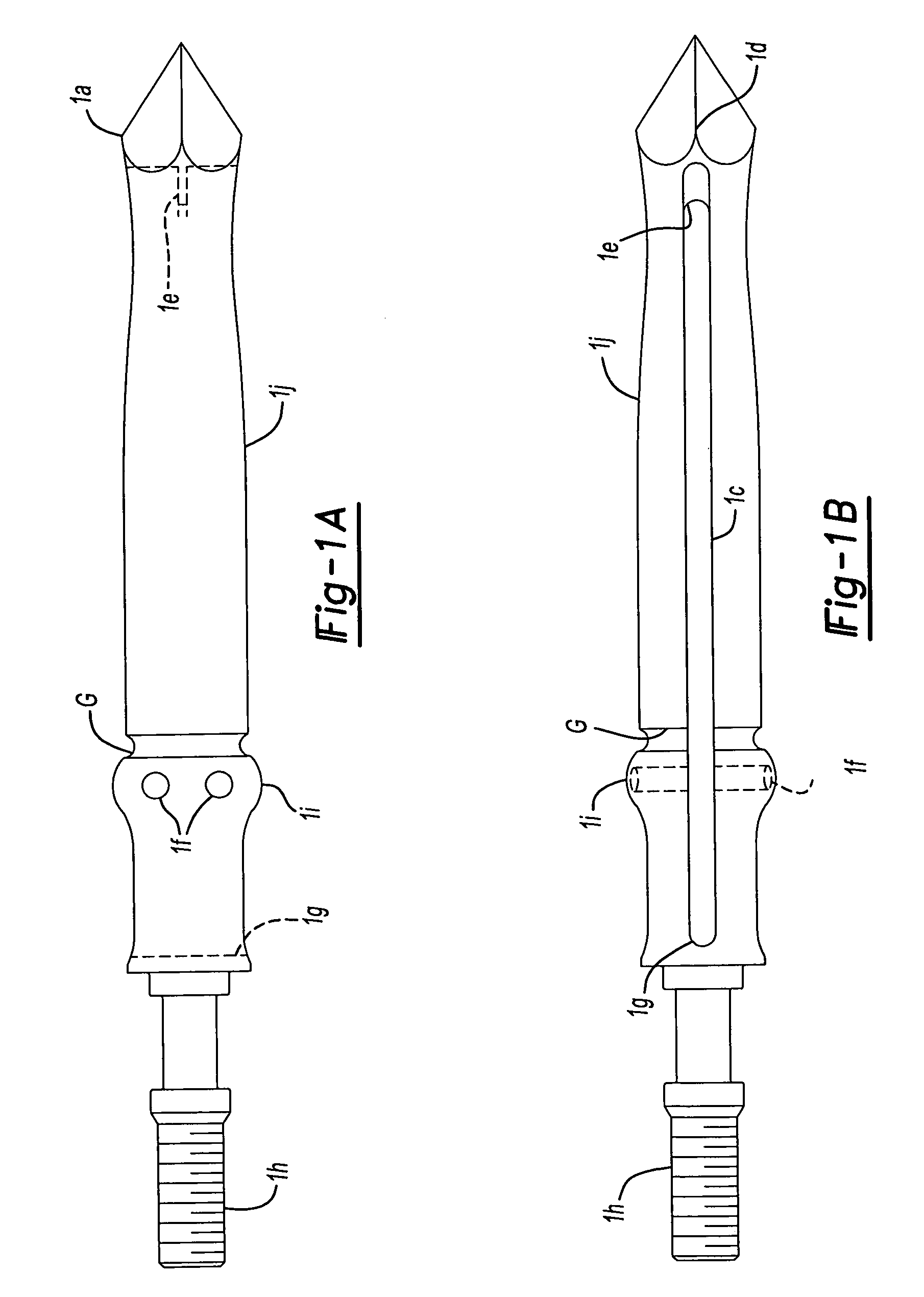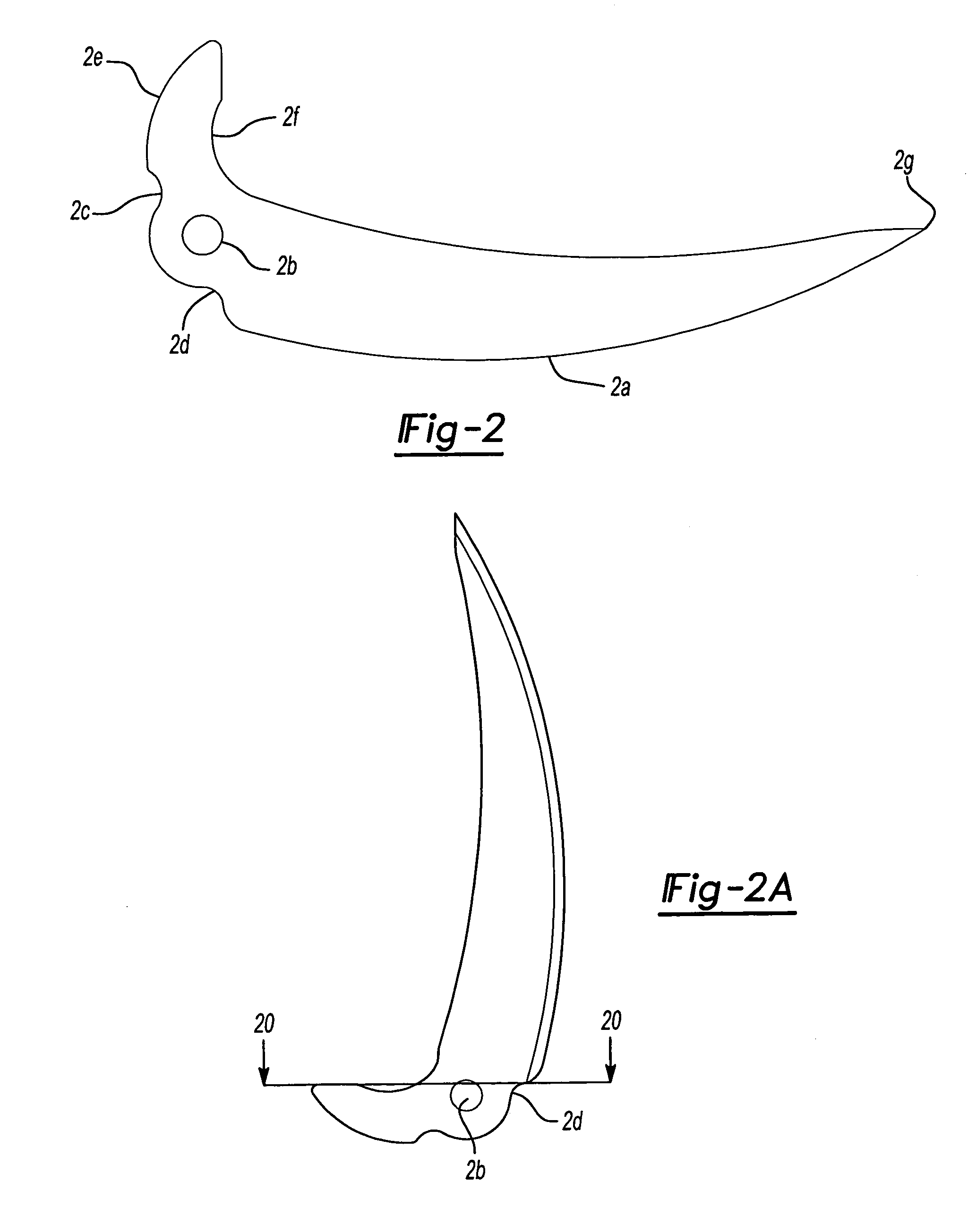Mechanical anti-wedging and controlled deployment broadhead
a technology of mechanical anti-wedging and broadhead, which is applied in the direction of arrows, throw games, sport apparatus, etc., can solve the problems of insufficient penetration before blade deployment, poor penetration, and high probability of deflection, so as to eliminate flight accuracy problems, eliminate the possibility of deflection (ricochet), and conserve kinetic energy
- Summary
- Abstract
- Description
- Claims
- Application Information
AI Technical Summary
Benefits of technology
Problems solved by technology
Method used
Image
Examples
Embodiment Construction
[0031]The following description of the preferred embodiment(s) is merely exemplary in nature and is in no way intended to limit the invention, its application, or uses.
[0032]Turning now descriptively to the drawings, in which similar reference characters denote similar elements throughout the several views, the attached figures illustrate a mechanical anti-wedging and controlled deployment broadhead, which comprises the body, blades, O-ring and set screws. The body is one-piece with an integrated faceted cutting tip. The cutting tip is slightly larger than the main body immediately following the tip. The body has a lengthwise slot, open to two sides that pass through part of it. A groove is cut into the exterior circumference of the body to locate a retainer like an O-ring. Two drilled and tapped holes are placed through the body for locating and holding the blades and are filled with supporting components like the set screws. The body then finishes at the rear with a pilot and then...
PUM
 Login to View More
Login to View More Abstract
Description
Claims
Application Information
 Login to View More
Login to View More - R&D
- Intellectual Property
- Life Sciences
- Materials
- Tech Scout
- Unparalleled Data Quality
- Higher Quality Content
- 60% Fewer Hallucinations
Browse by: Latest US Patents, China's latest patents, Technical Efficacy Thesaurus, Application Domain, Technology Topic, Popular Technical Reports.
© 2025 PatSnap. All rights reserved.Legal|Privacy policy|Modern Slavery Act Transparency Statement|Sitemap|About US| Contact US: help@patsnap.com



